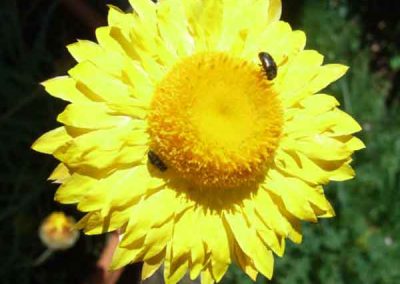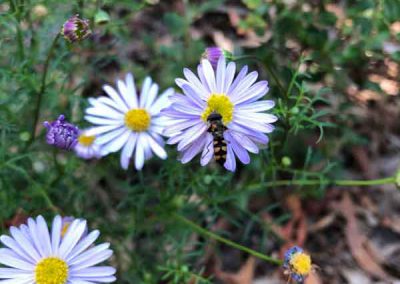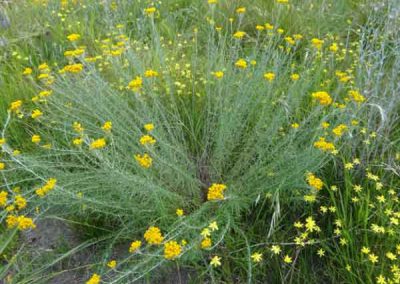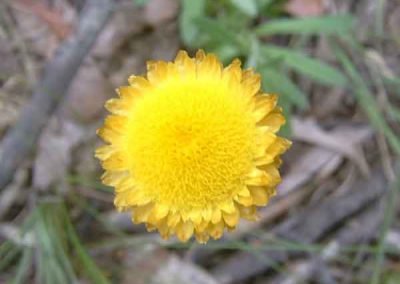Five indigenous pollinator-attracting daisies
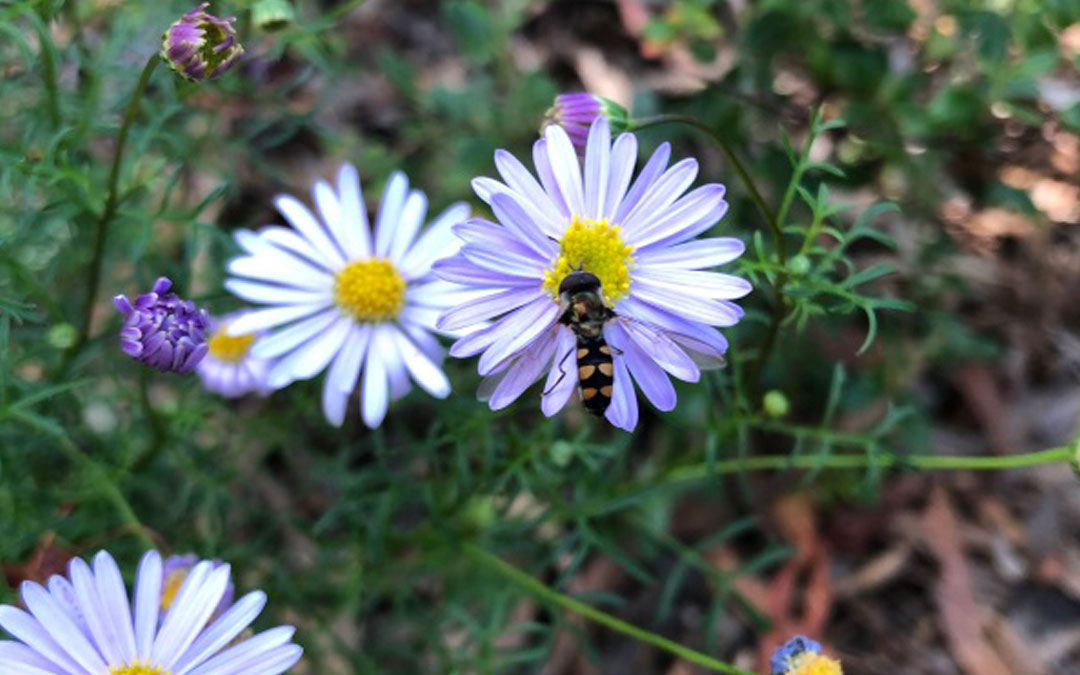
If you’re growing vegetables and fruit, you probably understand the benefits that pollinators bring to your garden. Many plants, particularly the cultivated varieties we grow for food, are self-fertile (don’t need other plants to pollinate them) but you’ll usually get a better crop if you’ve got a healthy population of pollinators visiting your garden.
European honey bees are the most commonly known pollinator species. They were introduced to Australia in the 1800s and while they are the best-known bees, we also have more than 2,000 species of native Australian species, all of which play a key role in pollination too. There are estimated to be a couple of thousand other pollinator insects (including moths, wasps, ants, flies, beetles, butterflies) that are indigenous to Australia. Other local pollinator species include microbats, flying foxes, skinks, small mammals and birds (particularly nectar-eating ones like lorikeets and honeyeaters).
Pollinators are in it for a feed. As the animal or insect feeds on the pollen (or more commonly the sweet nectar) of a plant, it brushes up against the anthers (the male pollen-producing parts of the flower). Pollen sticks to its body, feathers, thorax, head etc. It then moves to another flower or plant and brushes the pollen against the stigma (female part), creating pollination. Once pollinated the plant can produce fruit and then seed, allowing it to reproduce.
While most gardeners can list lots of introduced pollinator-attracting plants (rosemary, borage, lavenders, salvias and annuals such as alyssum and borage etc.), far fewer can name indigenous pollinator-attracting plants.
5 indigenous pollinator-attracting daisies
Here are some daisies that are looking great in gardens and in the bush right now and will draw in the insect pollinators into your garden:
- Leucochrysum albicans (Hoary Sunray)
With a yellow disc centre and radiating papery bracts in either white or yellow (only yellow are indigenous to north-east Melbourne), these are a gorgeous burst of colour that flower for almost half the year. Provides food for and will attract butterflies. - Brachyscome multifida (Cut-leaf Daisy)
Ranging in hues of white to mauve locally, and light yellows and pinks in other places in Australia, this is a gorgeous daisy that flowers for many months of the year. It’s very hardy, drought resistant and looks great in gardens, spilling over rocks or walls and in hanging baskets. - Chrysocephalum semipapposum (Clustered Everlasting)
Grows no taller than 1 metre, with clusters of bright yellow flowers at the ends of the stems and looks great mass planted in a swathe. Grows well in dappled sun, so it is great to plant under trees, including eucalypts. - Xerochrysum viscosum (Sticky Everlasting)
With bright gold bracts and a gold-crowned flower centre, the Sticky Everlasting is named for its rough and slightly sticky leaves. Like the Hoary Sunray, it looks great as a long-lasting cut flower and also provides food for butterflies. - Coronidium scorpioides (Button Everlasting)
Pale yellow button-like flowers that form a dense mat. Button Everlastings are herbaceous (dies back after flowering but reshoots in time to flower again in spring). Prefers semi-shade.
Growing and care
All these daisies can be grown in pots or garden beds and will create a colourful addition to your garden, as well as a welcome food source for native pollinator insects in your garden. All are already adapted to our hot, dry summer conditions, require little to no water once established and are perennial (will survive for years on end). Like all daisies, de-heading them of old flowers will encourage more blooms.
Where to buy
Visit La Trobe University’s Indigenous Plant Nursery in Bundoora or the non-profit VINC nursery in Fairfield to purchase great value, very affordable indigenous plants which have been sourced from our local area.
Written by Jen Willis

